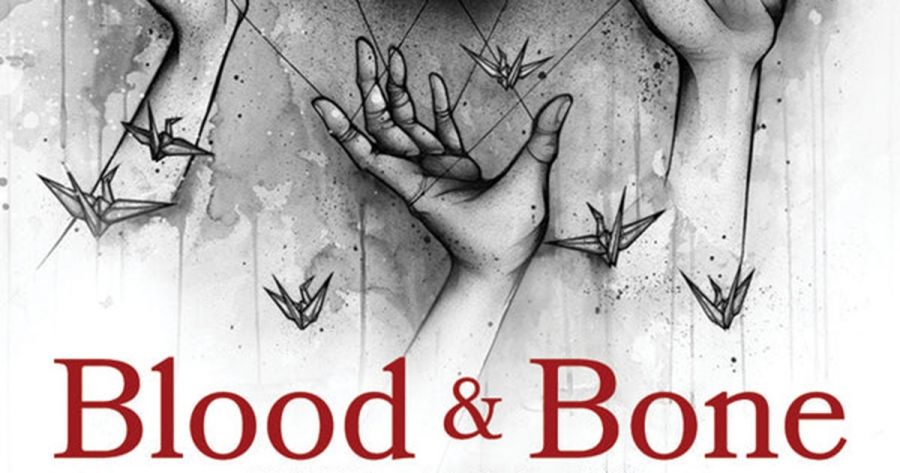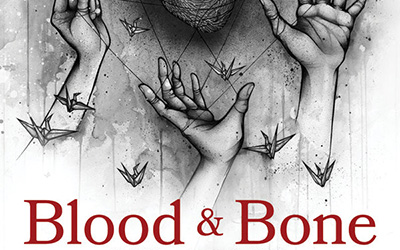
- Free Article: No
- Contents Category: Anthology
- Review Article: Yes
- Article Title: Vascular experience
- Article Subtitle: Fragmenting the mind and body
- Online Only: No
- Custom Highlight Text:
Surely every university’s creative writing anthology has the tagline ‘these are fresh voices’ plastered somewhere in its pages. In Blood & Bone, the thirty-eighth UTS Writers’ Anthology, this freshness is not some marketing cliché but apropos, characterised by all the gory atavism of its title and the recurrent theme of the body throughout its pages. These eclectic pieces explore the tension and liminality between the dichotomies that construct our reality: there is growth and atrophy; human and non-human; mind and body. Frequently, the contributors return to the medical clinic, but also to the digital world of AI, ChatGPT, and social media.
- Featured Image (400px * 250px):

- Alt Tag (Featured Image): Will Hunt reviews ‘Blood & Bone: UTS Writers’ Anthology 2024’ edited by Caileen Cachia et al.
- Book 1 Title: Blood & Bone
- Book 1 Subtitle: UTS Writers’ Anthology 2024
- Book 1 Biblio: Brio Books, $29.99 pb, 321 pp
- Book 1 Cover Small (400 x 600):

- Book 1 Cover (800 x 1200):

Blood & Bone begins with an acute awareness of the body. The first story is ‘Howard Welshpool’s Last Day’ by Caileen Cachia. The story follows Howard, a morose old man with a limited emotional range. If you have ever met an Aussie bloke who complains about ‘offending someone’s identity issues’ and ‘illegal immigrant’ neighbours, you have met Howard. Cachia punctuates the story with out-of-body refrains clinically analysing the growing ‘berry’ in Howard’s brain, simultaneously a symbol of flowering growth – his wife loves cherry blossoms – and a cancerous tumour. Cachia deconstructs the binary of life and death; while Howard is closest to dying, he is also closest to living, seeing beauty in the world around him while it destroys him. As the editors note, they imposed no theme for the anthology; however, one began to organically emerge.
The most astounding piece in Blood & Bone is Lily Cameron’s ‘When I look at my body I think of crumpled paper’. Cameron’s piece of creative non-fiction traces her disparate thoughts in a series of vignettes. It is the mark of autofiction, diary-writing, and creative non-fiction to distrust the artificiality of the self. As Helen Garner writes in her essay ‘I’ (2002), ‘[I]n order to write intimately – in order to write at all – one has to invent an “I”.’ Cameron distrusts her ability to craft herself, humorously admitting that the pronoun ‘I’ appears 259 times in her creative essay, and that she is unsure whether she can hear her internal monologue. Cameron’s days are ‘filled with fragments’ of elusive memories, some of which she manages to write down, others that ‘pass [her] by in flashes’. This fragmentation imposes on all aspects of her essay. She investigates the disconnect she feels towards her body, calling it a ‘machine that turns thoughts into circles’. In a similar vein, Helen Nguyen’s ‘At the Clinic’ is a powerful short memoir about body image and the artifice of plastic surgery, the twisted idea of investing in one’s body, told as the narrator witnesses her body as a separate entity.
Cameron’s mosaic style, echoed in other pieces such as ‘In the Depth of Winters’ by Grant Marjoribanks, ‘New Years Day’ by Laurie Geddes, and ‘bone deep’ by Caitlin Wilby, follows the narrative model outlined in Ursula K. Le Guin’s ‘The Carrier Bag Theory of Fiction’ (1988). Le Guin describes a type of narrative distinct from the ‘hunter’ style of story that is defined by attack and action, cause and effect. Conversely, Le Guin’s model tells a ‘life story’ whereby a story is a ‘medicine bundle, holding things in a particular, powerful relation to one another and to us’. Cameron collects thoughts and strands of narrative, amalgamating them into a fragmented whole. Her essay is constellational, not linear. There is a modern condition to this piece: she confides in the reader that she thought of writing these pieces in ChatGPT; she admits that a draft ‘lived on her phone’s notes app’. Cameron’s essay, taking ‘the notes app to the nth degree’, seems to be a modern variant of Le Guin’s ‘Carrier Bag’ model of narrative.
Blood & Bone features stories that embrace the ontology and absurdity of living in the digital world. In David Saunders’ story, set in the futuristic landscape of ‘Degustation City’, a disturbed man (who calls his partner ‘Cupcake’) dreams of a ‘real, biological baby’ rather than an ‘AI kid or whatever’. There is an unnerving absurdity to the pieces in Blood & Bone. In Alan Takayama’s ‘Execute’, a virtual reality pornography developer cultivates a friendship with an AI model of Barack Obama. It is ludicrously obscene, yet it speaks to the labyrinthine, chaotic nature of the internet.
These stories follow several recent books about engaging with the internet as its own world, such as with Patricia Lockwood’s No One is Talking About This (2021) and Honor Levy’s My First Book (2024). Stories like ‘Monstera B10t’ question how humans will interact with AI in the coming decades. In the mould of Philip K. Dick, this anthology asks whether non-human creations can have the same emotions as humans. In ‘Monstera B10t’, we enter the ‘mind’ of a robot and discover how it experiences the world. At a time when it is increasingly hard to distinguish between what is real and what is fake on the internet, the contributors of Blood & Bone tap into the complexities of what it means to be human in the digital age.
Reading Blood & Bone is a vascular experience. One is forced to question the connection between one’s body and one’s identity. Are our minds loose collections of memories and fragments? Can we count our bodies as a part of ourselves in the same way we count our thoughts? What if we didn’t have bodies and our intelligence was artificial? The pieces in Blood & Bone creatively evoke the concerns of a generation born and raised in the digital world, making for thoughtful reading that forces the reader to question the connection between their minds and bodies, and ultimately, their place in the digital age.


Comments powered by CComment